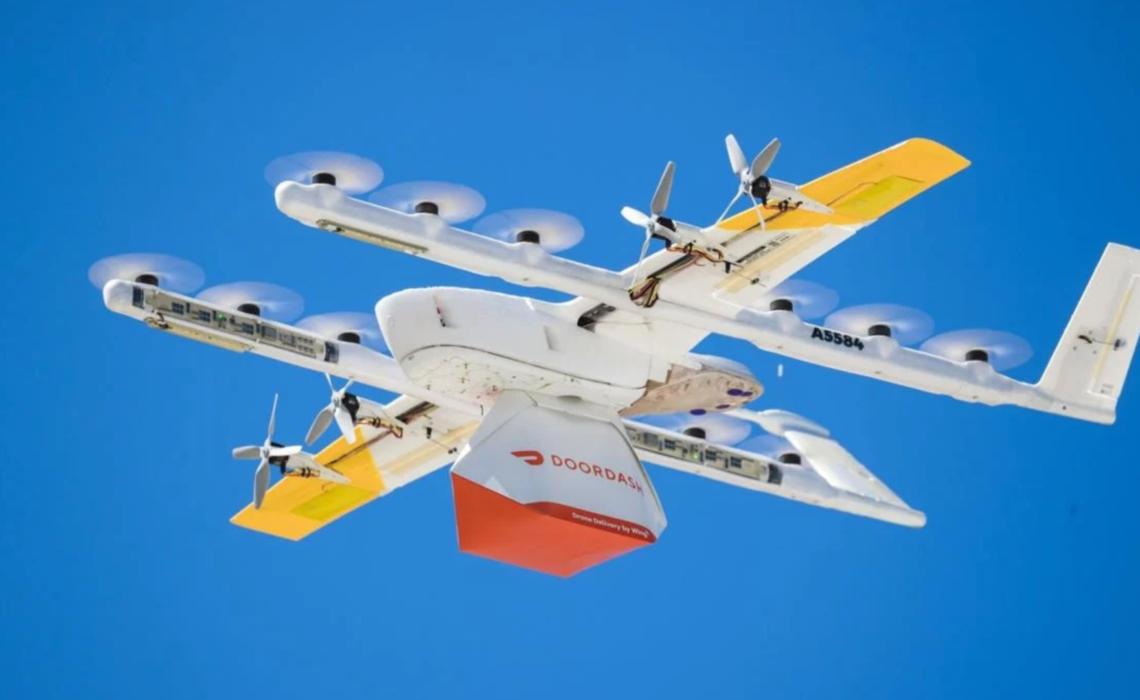
A version of this story first ran in USA TODAY.
In the not-too-distant future, in a city, town, or even remote village near you, the tap of an app could summon on-demand drone delivery to your doorstep in less than 30 minutes.
That’s pretty amazing for ordering fast-food meals or some forgotten groceries before dinner time. But if you’re an exhausted parent working from home with a sick child, for instance, getting prescription medication dropped off by a drone to stop your little one’s projectile vomiting can feel like nothing short of a miracle.
It might sound like the high-flying hype of big tech from years past. After all, it’s been more than a decade since former Amazon CEO Jeff Bezos famously overpromised and under-delivered a flock of high-speed delivery drones jetting out all your Prime purchases in a Jetson-like whir of efficiency.
RETAIL DRONE DELIVERY IS ABOUT TO TAKE OFF IN AMERICA.
According to three of the largest drone delivery companies in the U.S.,DroneUp, Zipline, and Wing, it’s not a matter of if, but when, drone deliveries reach skies near you. Tens of thousands of people around the country already get everything from lunchtime goodies and quick replacement light bulbs to vaccines and prescriptions via drone. And recent Federal Aviation Administration clearances are already propelling the industry forward.
“Right now, today, we reach about 4 million people in seven states in America,” DroneUp CEO Tom Walker told me when I moderated a SXSW panel discussion earlier this month. “That’s about to go up dramatically.”
Cyndi Sanders is one of the people already using drone delivery.
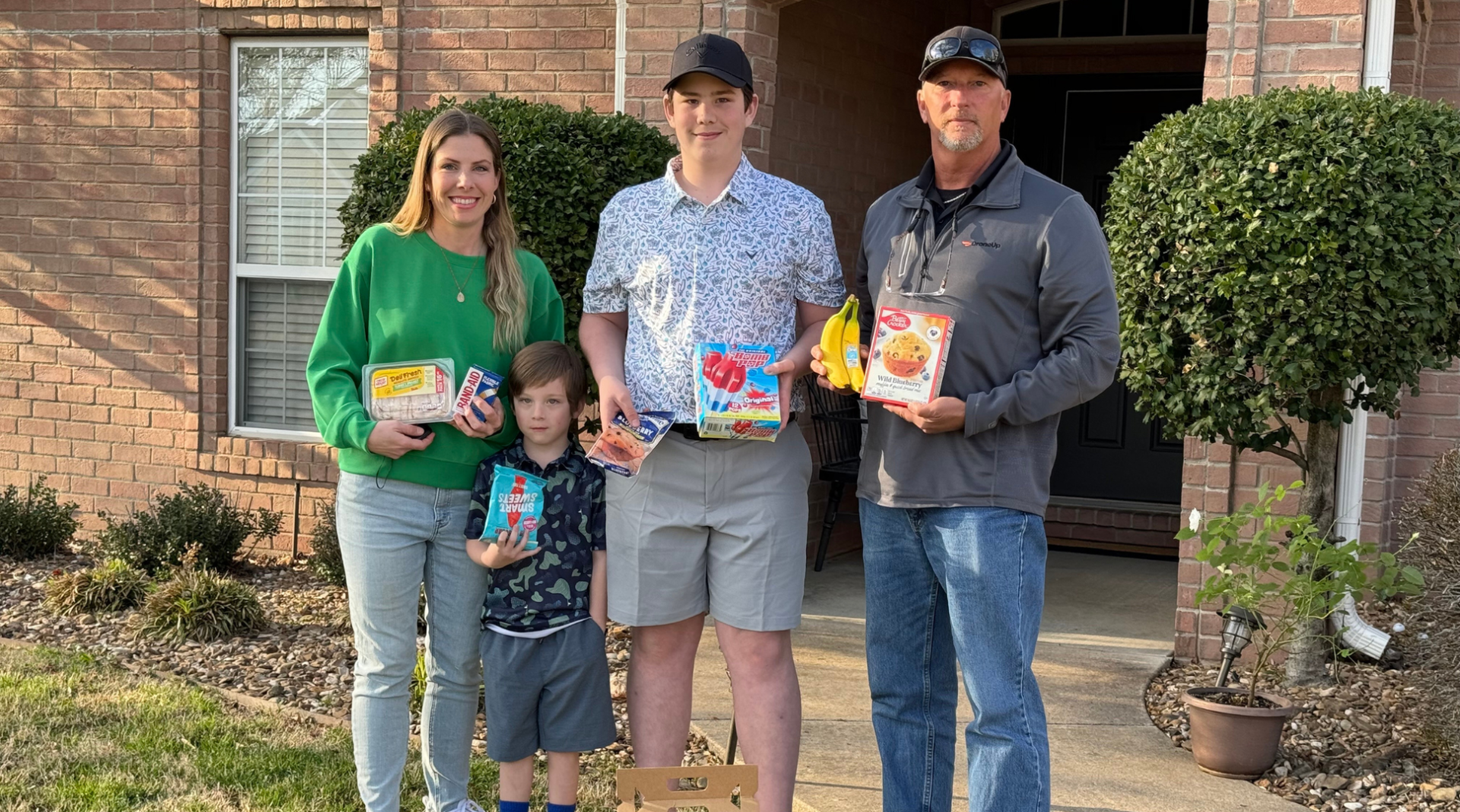
Cyndi Sanders and her family show-off drone delivered goods.
Sanders, a mom of two who lives in Rogers, Arkansas, says DroneUp has made more than 100 deliveries to her doorstep since it started at her local Walmart in November 2022.
“It’s so convenient,’’ she told me. “We’ve ordered everything, including popsicles, and they’re still frozen when they get here. It’s an amazing service. They’ve saved the day on dinners, and it’s just a great way to get what we need in a really cool way.’’
She believes that such a service will only grow. “I think the future is in the skies,’’ she said. “I really do.”
DRONEUP UNVEILS NEW AUTONOMOUS DELIVERY SYSTEM WITH 7-11, WALMART, AND CHICK-FIL-A.
DroneUp just unveiled “the world’s first fully automated, end-to-end drone delivery system,” according to Walker.
“This system (gets) you what you want and need, not in two or three days, or even two or three hours, but in less than 30 minutes,” he told a crowd at the company’s headquarters in Virginia.
What Walker described is a proprietary series of new hardware and software gadgets and tech tools that can make sure when you order something from a nearby Walmart or Chick-fil-A, for example, it lands on your doorstep long before your sandwich gets soggy or your milkshake gets runny.
Usually, it takes several people, including drivers, to do that work. But as e-commerce continues to skyrocket in this age of on-demand, having a giant fleet of trucks or cars deliver small packages to people all over the map doesn’t make the most sense anymore.
Logistics experts say that ground delivery is expensive and increasingly dangerous due to a rise in delivery-related accidents and run-down infrastructure. It’s also bad for the environment and unable to keep up with the escalating demand.
Last year, UPS and Amazon delivered more than 11.5 billion packages which took more than 1.5 million trucks a day to carry. Most of those packages were less than 5 pounds.
“It clogs our streets and pollutes our planet,” Walker said. “Last year in the United States, nearly 6,000 people died in delivery-related accidents, and another 150,000 were injured. We have an aging and crumbling infrastructure, where one in every 5 miles of America’s roadways is considered in poor condition. We know the fix isn’t adding more trucks, and we also know we can’t just unleash a swarm of delivery drones to fix it.”
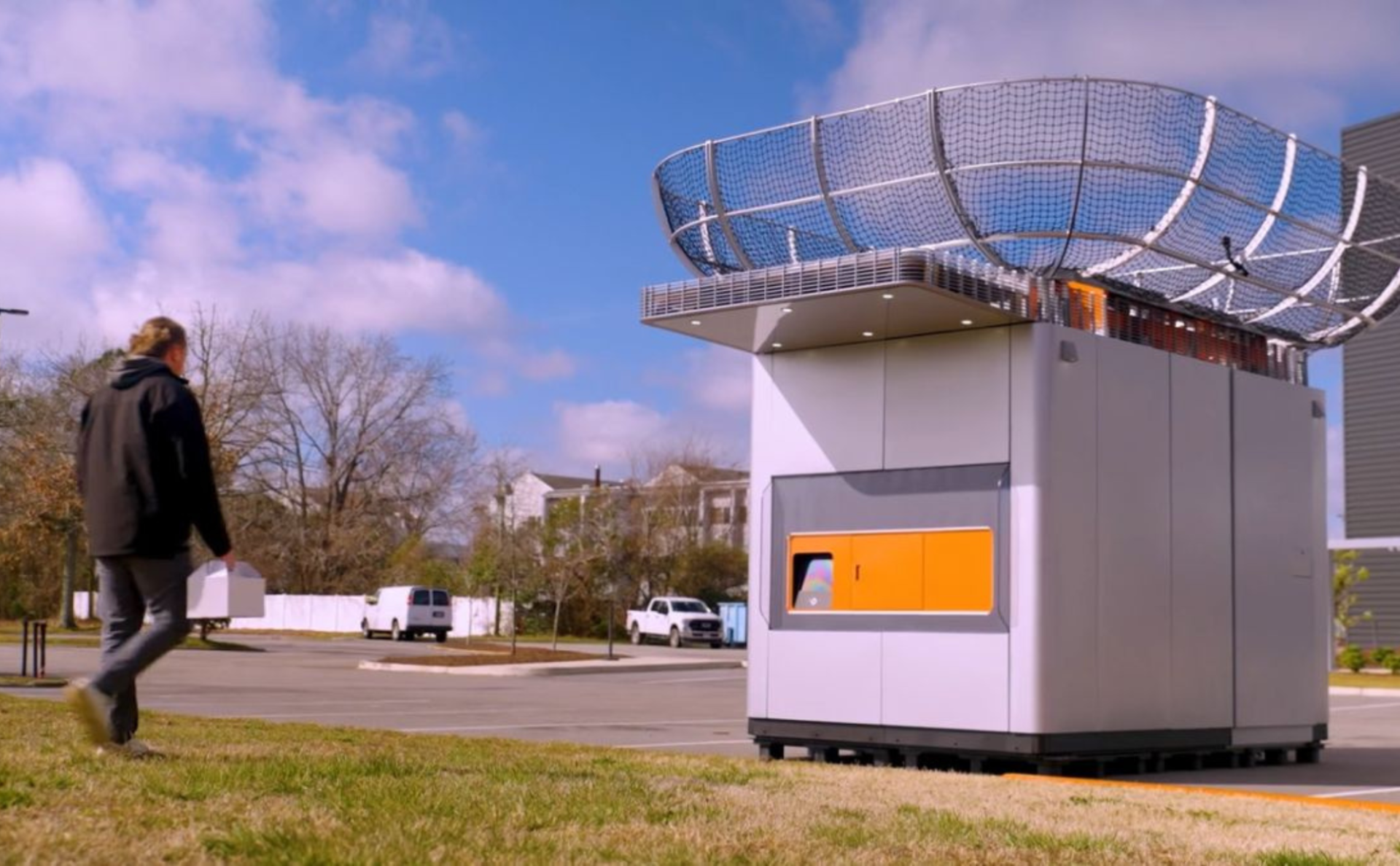 Walker hopes DroneUp’s new “last mile ecosystem” addresses those issues, starting with a new high-tech package kiosk they call the “DBX Hub.”
Walker hopes DroneUp’s new “last mile ecosystem” addresses those issues, starting with a new high-tech package kiosk they call the “DBX Hub.”
The hub looks like a big portable ATM or high-tech drive-through coffee kiosk. (I keep wanting to call it the “drone kiosk thingy.”)
The versions I’ve seen are smaller than a parking space, and Walker says they can make them any shape, configuration, and size. The idea is to put it next to a drive-through window, on a rooftop, or in popular pick-up and drop-off locations like college campuses. “All it needs is power,” Walker said. “It’s completely self-contained and fully automates the package loading process.”
It works like this: You make an online order, and a store gets it just like they do today. A worker grabs your stuff, boxes it up, attaches a little barcode, and sets it inside the temperature-controlled hub. Robotic equipment in the locker weighs the package and then sends it to a waiting drone. The drone attaches the box via tether and speeds off, flying some 300 feet high until it gets to your house and hovers, lowering your goodies down gently from around 90 feet.
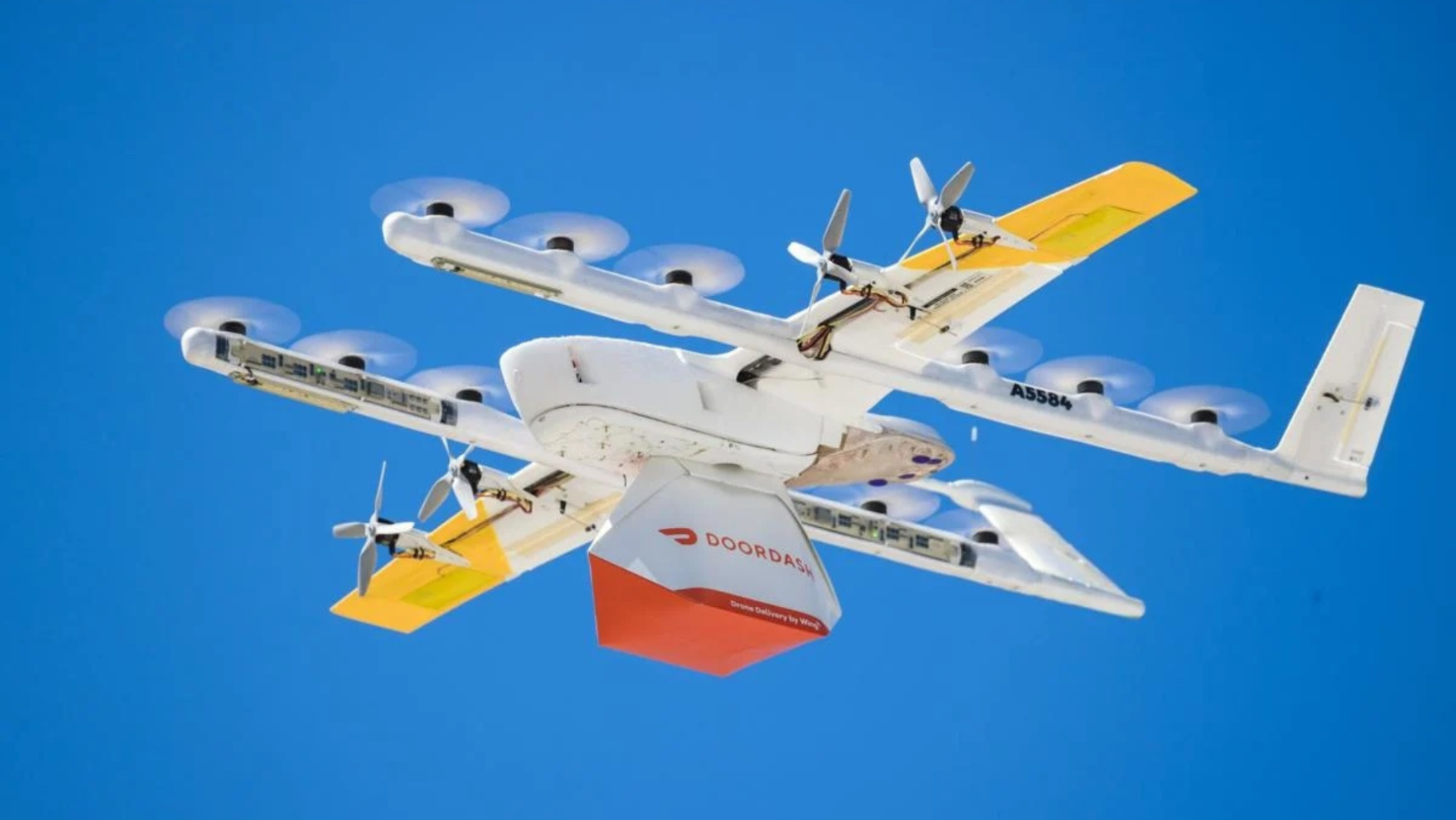
A bevy of onboard sensors “know if there’s anything in the way,” Walker said, “and can steer clear of trees, wires, people, pets, lawn furniture, and even porch pirates.” He added that if someone does grab the tether, it releases and will sound an alarm back at the package base.
The top of the new hub has a landing pad and charging base for drones to come and go, and the plan is for there to always be a backup drone, or drones at nearby hubs that can fill in when there are no drones available at a particular location.
The hubs can also function as stand-alone storage lockers or as automated extensions of existing retailers. In that case, you could order something, like a prescription from your pharmacy, and then pick it up at one of the hubs on a college campus or near your workplace rather than awaiting delivery at home.
Rounding out this “ecosystem” are two new drone models, including a short-range one that can carry packages up to 10 pounds, and up to 60 miles round trip. It’s rated for all weather and winds up to 30 knots. (Those are strong enough to turn your umbrella inside out and make it hard to walk down the street).
DroneUp also showed off a “high endurance model,” a drone that can carry more weight and travel nearly 100 miles round trip. Walker said that both models “make as much sound as your refrigerator.”
DroneUp’s just-announced drone-delivery ecosystem is already in use in Garland, Texas, a sprawling suburb about 15 miles northeast of downtown Dallas and is home to about a quarter million people. 7-11 announced it will use DroneUp’s new system, and Walker expects more areas and retailers to roll out “within the coming weeks.”
DELIVERY DRONE DOGFIGHT HEATS UP IN QUEST FOR SKY-HIGH DOMINANCE.
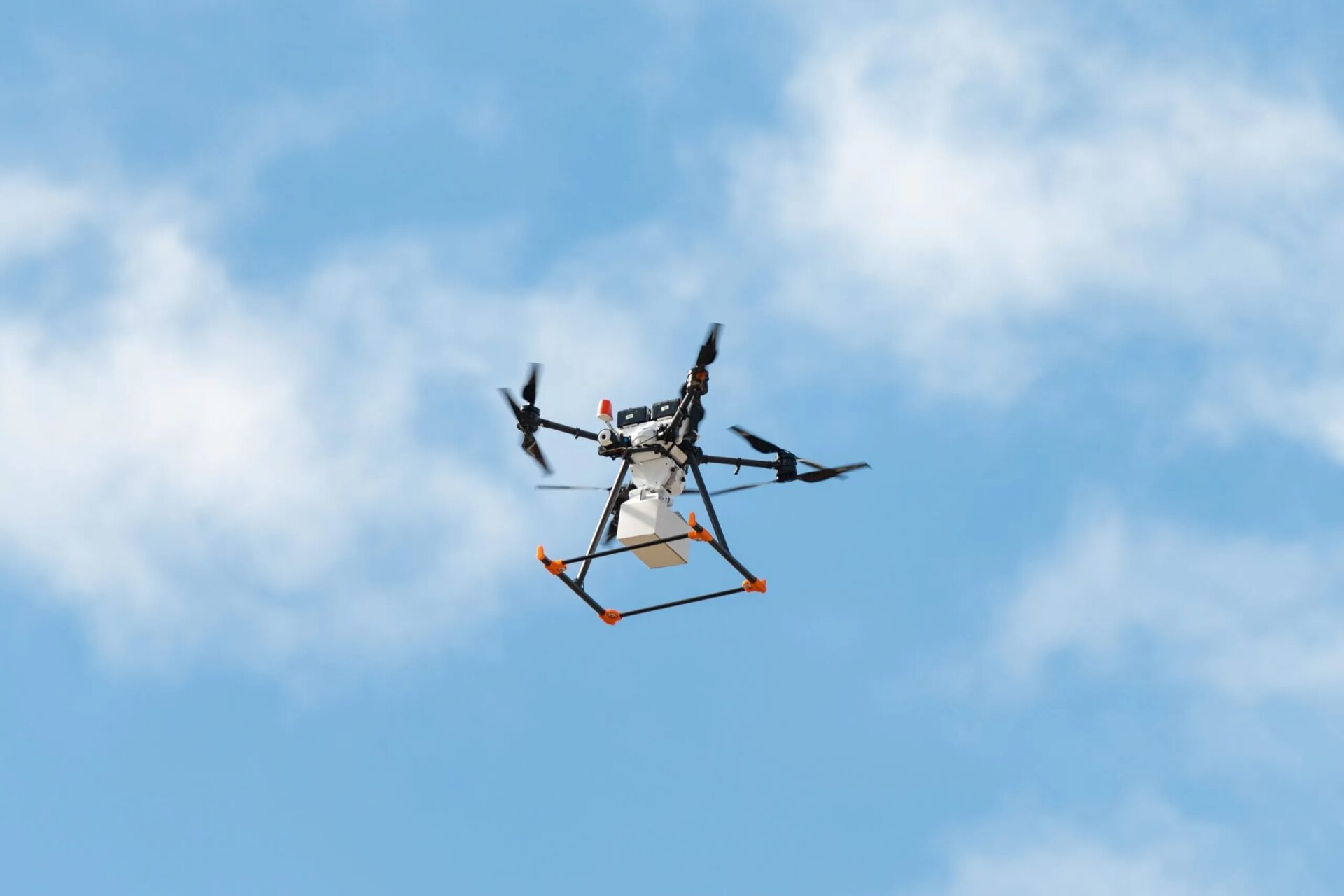
DroneUp’s news last week is the latest volley in what’s turning into a real battle for delivery drone expansion in the U.S. DroneUp’s one of at least three U.S.-based companies – including Zipline and Wing – that fly deliveries for Walmart, fast food restaurants like Chick-fil-A, Sweetgreen, and Wendy’s, and a handful of health clinics, in several states, including Texas, Arkansas, Florida, and Virginia.
Silicon Valley darling Zipline – recently valued at $4.2 billion and number 36 on Fast Co.’s “Most Innovative Companies of 2024” list – has a video of a similar concept on the homepage of its website that the company says is also in “active testing” in California right now.
When it announced the concept in March of last year, Zipline explained that it includes a charging station and dock that can also attach to the side of a building and help automate the entire process.
Zipline calls its latest tech its “Platform 2” system. It can carry up to eight pounds within a 10-mile radius and land a package in a space about the size of a shoebox.
One of the most significant differences from DroneUp is that rather than lowering a box with your groceries or medicine inside, it lowers a temperature-controlled, self-steering cargo droid on a tether. The droid then releases your package from its belly before ascending back into the sky.
“We expect Platform 2 to roll out in America this year and serve millions of people in the United States over the next few years in Texas, Washington, Michigan, Ohio, Arkansas, Pennsylvania, and Utah,” Jeff Williams, Head of U.S. Operations at Zipline, wrote via text message.
Wing, which is owned by Google parent Alphabet, has also shown off its idea for a “Wing Delivery Network” that’s made up of drones, designated pads for takeoff and landing, and “Autoloader” stations where workers can put packages to wait for pickup and delivery.
“It makes much more sense to carry around a three-pound box with a 10-pound (drone) than it does to carry around a three-pound box with a couple of thousand-pound cars,” Wing CEO Adam Woodworth explained in a video posted on YouTube.
Wing shared that it “completed 5,000 deliveries to Walmart customers in its first six months across two locations in the Dallas Fort Worth area” and plans to expand to other areas throughout the year.
ARE DRONES SAFE?
Zipline operates in eight countries on four continents and is about to reach its 1 millionth commercial delivery milestone. The company says it completes a delivery drone every 70 seconds worldwide and has never had a “single major safety incident.”
Droneup’s Walker also touted his company’s safety record. “We’ve made hundreds of thousands of deliveries to date, around 6,000-7,000 a month in the United States alone, and have not had one single accident or injury,” he said.
A spokesperson for the FAA also confirmed that there haven’t been “any significant reportable accidents” with drone deliveries in the U.S.
SO WHY DON’T I HAVE DRONE DELIVERY NEAR ME?
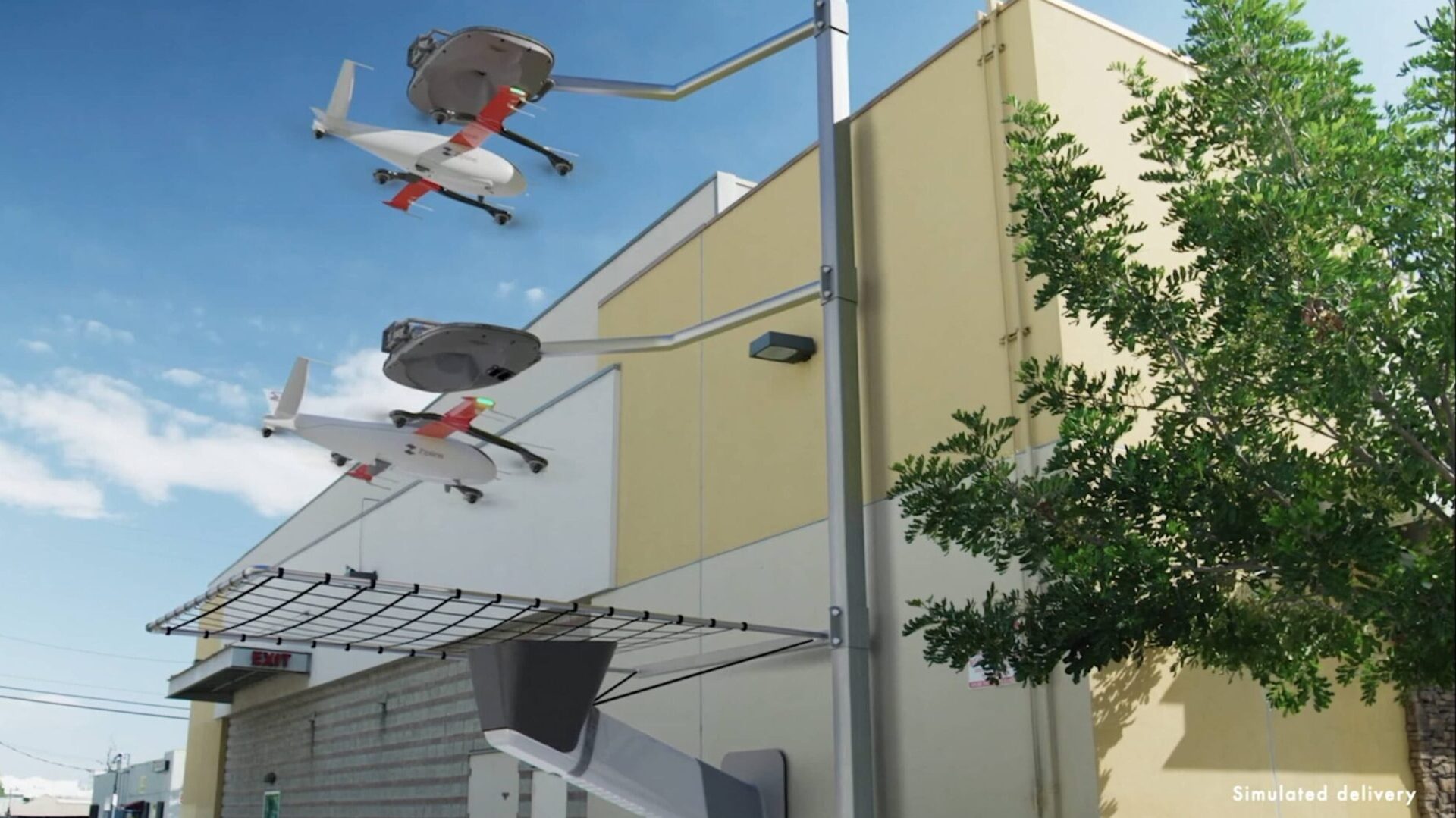
The drone delivery industry has been careful “to get it right” in the U.S., flying a series of controlled pilot programs, and testing markets in small and large cities in Texas, Florida, Arizona, Arkansas, Virginia, California, and Utah for the past few years.
But recent milestone FAA clearances and a slew of retail rollouts from Walmart, DoorDash, and others indicate that the industry is poised to skyrocket, making drone delivery much more widespread.
Sarah Claytor, a 42-year-old mom who lives in the small town of Pea Ridge, Arkansas, says she can’t imagine going without drone deliveries. “The thing that makes me love it the most is that I can get medicine sent to me directly whenever I have a sick child at home,’’ she said. “I think if we ever moved, I wouldn’t be able to live without it.”
Jennifer Jolly is an Emmy Award-winning consumer tech columnist and on-air correspondent. Read Jennifer’s latest columns at USAToday.com/tech or follow her @JennJolly on Instagram.
Contact her at JJ@Techish.com.
